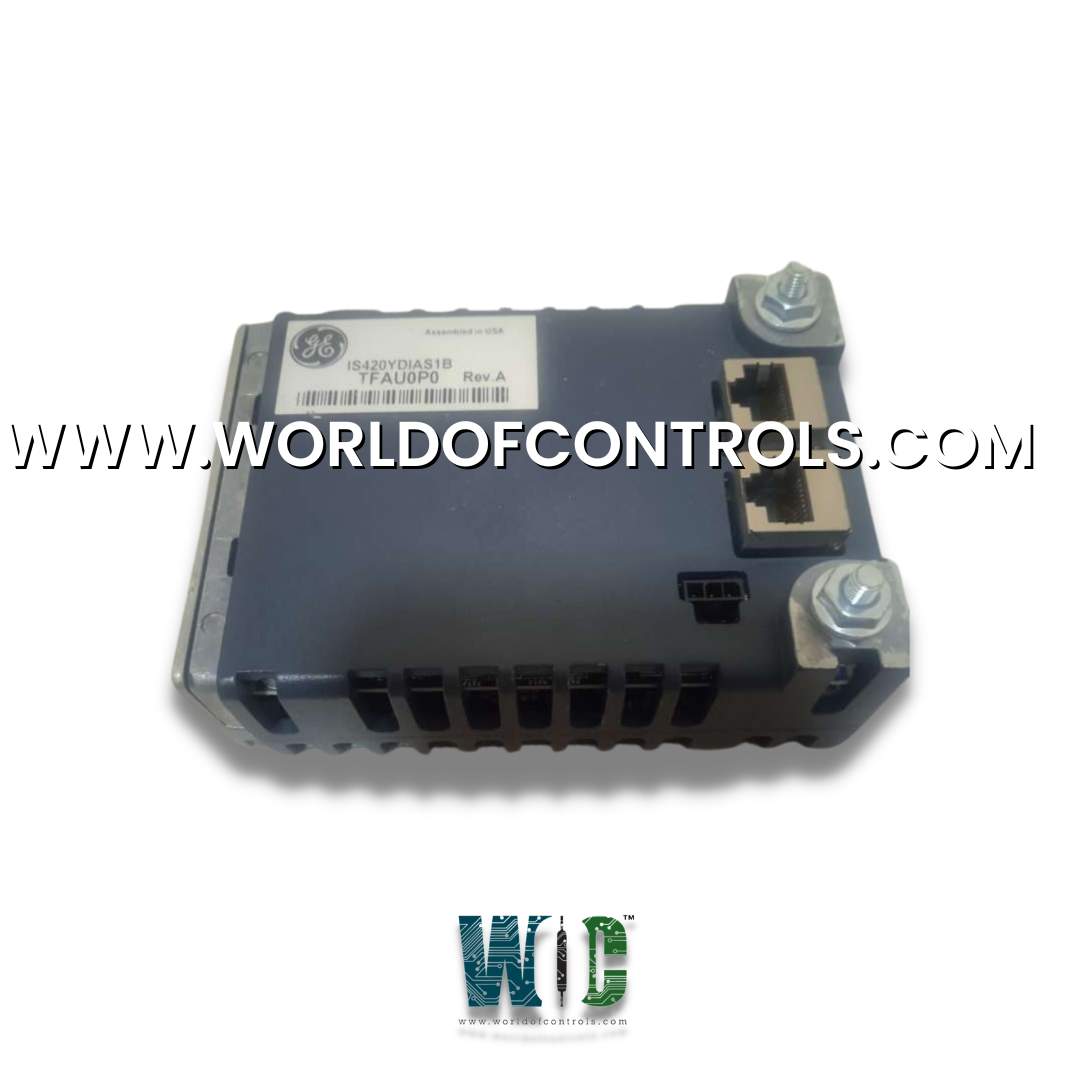
World Of Controls understands the criticality of your requirement and works towards reducing the lead time as much as possible.
IS420YDIAS1B - Discrete Contact I/O Module is available in stock which ships the same day.
IS420YDIAS1B - Discrete Contact I/O Module comes in UNUSED as well as REBUILT condition.
To avail our best deals for IS420YDIAS1B - Discrete Contact I/O Module, contact us and we will get back to you within 24 hours.
SPECIFICATIONS:
Part Number: IS420YDIAS1B
Manufacturer: General Electric
Series: Mark VIeS
Function: Discrete Contact I/O Module
Number of relay channels: 24
Input Isolation: 1500 V
Input filter ac voltage rejection: 125 V dc
Technology: Surface Mount
Operating Temperature: -40 to 70°C
Size: 8.26 high x 4.19 wide x 12.1 cm
Repair: 3-5 Days
Availability: In Stock
Country of Manufacture: United States (USA)
Manual: GEH-6855
FUNCTIONAL DESCRIPTION:
IS420YDIAS1B is a Discrete Contact I/O Module manufactured and designed by General Electric as part of the Mark VIeS Series used in GE Distributed Control Systems. The Discrete Input (IS420YDIAS1B) I/O pack provides the electrical interface between one or two I/O Ethernet networks and a discrete input terminal board. The YDIA contains a common processor board and an acquisition board specific to the discrete input function. The YDIA I/O pack accepts up to 24 contact inputs and terminal board-specific feedback signals and supports three different voltage levels. System input to the pack is through dual RJ-45 Ethernet connectors and a three-pin power input. Discrete signal input is through a DC-37 pin connector that connects directly with the associated terminal board connector. Visual diagnostics are provided through indicator LEDs.
FEATURES:
WOC has the largest stock of GE Distributed Control System Replacement Parts. We can also repair your faulty boards. WORLD OF CONTROLS can also supply unused and rebuilt backed-up with a warranty. Our team of experts is available round the clock to support your OEM needs. Our team of experts at WOC is happy to assist you with any of your automation requirements. For pricing and availability on any parts and repairs, kindly get in touch with our team by phone or email.
What is a Discrete Contact I/O Module?
A Discrete Contact I/O Module is a device used in industrial automation to interface between a control system and external devices through discrete input and output signals. It handles binary signals, such as on/off or high/low, to control and monitor various processes.
What are the typical applications of Discrete Contact I/O Modules?
These modules are commonly used in manufacturing and process industries to control machinery, monitor sensors, and manage other discrete processes. Examples include controlling motors, valves, and sensors in a production line.
How does a Discrete Contact I/O Module differ from analog I/O modules?
Discrete modules handle binary signals (0 or 1), while analog modules deal with continuous signals within a range. Discrete I/O is suitable for simple on/off control, whereas analog I/O is used for processes requiring variable and precise control.